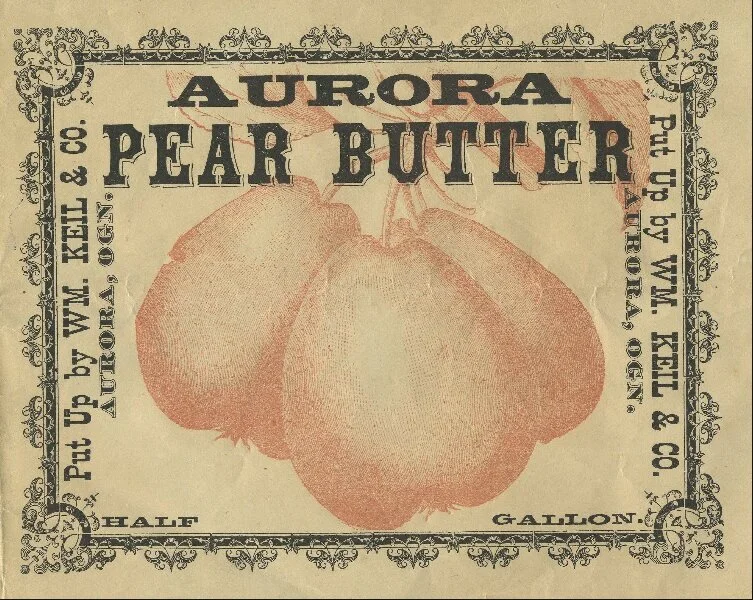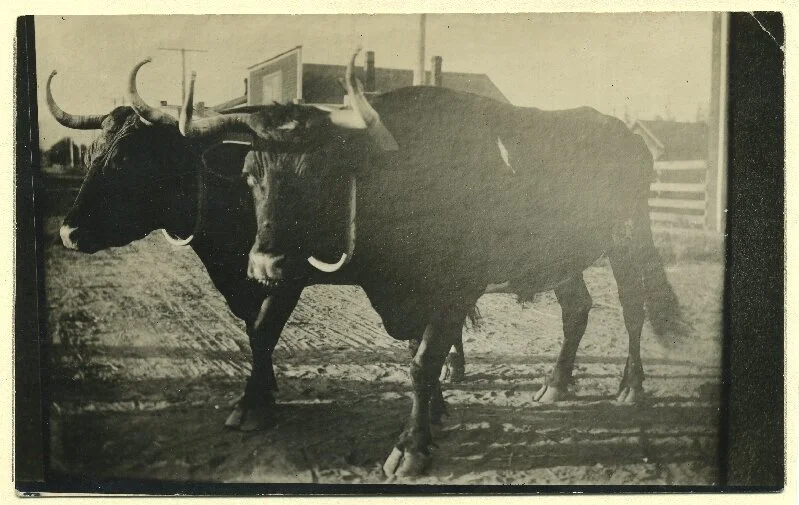Harvesting hops
FARMING & AGRICULTURE
A Hard-Working Communal Farm
The Aurora Colony, a Christian based communal society, was economically strong because of its emphasis on farming and agriculture. Dr. William Keil purchased the Oregon site — which he named Aurora Mills after his daughter — because it included existing grist and saw mills from previous owners. Additionally, Keil secured apple orchards from John Grim. Within a few years, as evidenced by the Colony account books, the Aurora Colonists had developed major markets for their agricultural products.
Fruits such as apples and pears… vegetables such as cabbages, spinach and beans… hops for beer-making… grains such as wheat to grind into flour… flax for spinning and weaving linen… sheep for meat and for wool… and pigs, cattle, horses, mules, chickens, goats — the Colony lifestyle provided these in abundance.
Communal Farming
Though a Colonist might be trained as a shoemaker, he was also expected to help with the harvest. After each family received what they needed, the surplus was sold to the public and the proceeds from the sale were used to buy more land or improved equipment or materials.
Quotes from Colony Members
HENRY CONRAD FINCK
“No trace of manure except in the gardens of the Germans here. The Americans let their cattle roam about outdoors all the year; here in Bethel we keep ours in the stable at least in the Winter.”
WILLIAM MILLER
“We have nice weather so far and are busy harvesting but we are almost through and coming to thrash and the crops are good. Wheat averages from 20 to 28 cents and oats from twenty five to Thirty and wages are one dollar to one dollar and a half and in some work more by the month fifteen to twenty five. My work is for the next five or six weeks harvesting and after that is all over I will go in the shops again.”
GEORGE WOLFER: PLENTY OF WORK
George Link and George Wolfer with eight oxen each to a plow broke up the new Will farm in 1864 south of Aurora. The district consisted of rolling hill land well sprinkled with hazel, Oregon grape and buckthorne. One man to a plow — two drivers, two grubers. Wolfer later said:
“We plowed deep, about 11 inches or so, to get as much of the deep set hazel roots as possible. We plowed less than an acre per day. It was not easy work.”
HENRY THEOPHILUS FINCK: PLENTY OF APPLES
“I had the rare good fortune to grow up in an Oregon apple orchard. In our orchard of many hundreds of trees there were scores of varieties — the Gravenstein, the Red Astyrachan, the Baldwins, the Northern Spy, Yellow Newton, Green Newtown Pippins, Winesap, Roxbury Russet, White Winter Pearmain, Swaar, Seek-no-further, and the Rambo, the juiciest of cider apples and good to eat out of hand. Oregon apples gave me my college education, and my sturdy health, too, for nothing is more wholesome than apples, and from my 8th to my 18th year I ate more apples than anything else.”





